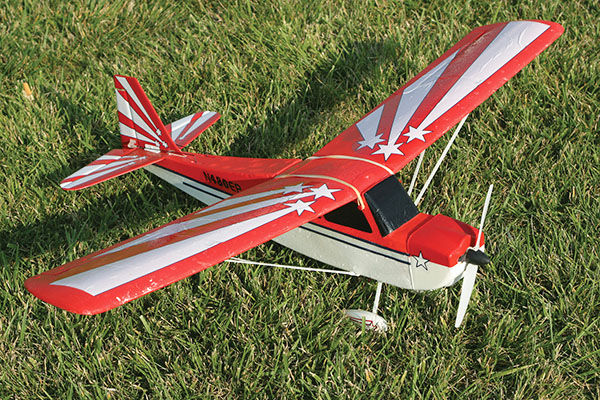
A crash doesn’t have to take the fun out of flying. Here’s how to master the disaster. Article and photos by Michael Ramsey. Featured in the Fall 2008 issue of Park Pilot.
The intent is to have fun and enjoy flying park models, but when a precious aircraft inadvertently meets the ground, it’s easy to get upset. When I was new at this hobby, my first reaction to a crash was anger, which often turned to disgust with both the model and myself. While out flying recently with a friend, she was doing great until her model suddenly dove into the ground at full throttle. We didn’t know why the accident occurred, but the immediate problem was that her model was now only barely recognizable as an airplane. The level of frustration in her expression was obvious. What’s hard to believe after a crash is that it’s not the end of the world, even though it’s natural to think it is. The first stage in getting over it is to look at the crashed model a few days later, when the disaster somehow seems less daunting.

Collect every piece from the scene. It always looks bad at first.
I try to look at any incident as an opportunity rather than a setback. In the case of our model, we had both felt that the airplane could have used a little more power, so we both laughed and thought, “Well, now that the model is apart…” Our rebuild started with the jigsaw puzzle approach. We arranged all the pieces on a table with the puzzle edges and colors matched. Our model is foam, so any parts that are glued back together will usually have greater strength than they did before. Water-based, polyvinyl resin glues, like RC-56 or Pacer Formula 560, dry clear and clean up easily with water. The repair joints are somewhat flexible, like the foam, and torn edges are practically invisible.

One at a time, many of the broken parts can be put back together with glue and tape.
One part at a time, the model went back together. Progress was swift, and the job became easier as it neared conclusion. Our CSI report concluded that the clevis on the elevator pushrod had pulled out, so the crash was not directly caused by pilot error. The primary goal of our repair was to return the model to its original form, then we would add the upgrades. We were careful to keep the structure straight as we went along. We eye-balled most of the repairs, but had metal rulers handy in case we came to a critical step. Any holes in the model that didn’t have a chunk of foam to fill them were dressed with lightweight filler. A coat of glue was painted over the patch so the filler would remain attached. The original power system was a Speed 400 motor, a brushed ESC and a NiMH battery. Polk’s Hobby offers an equivalent brushless system with less weight and twice the power for just a few dollars more. Sold!

Making repairs is an opportunity to replace an older power system with an updated set from Polk’s Hobby.
Imagining how much better the model would perform became an inspiration, and a fun part of the rebuild. The resurrection project now spurred more than just a sense of accomplishment; with better knowledge of her model’s materials, our pilot now had greater confidence in her model. So how did the repaired bird fly? Better than ever, and if airplanes could smile, she’d be grinning from ear to ear.

Better than new. Yes, this is after the devastating crash.

This pilot is happy once again.
When a crash occurs, don’t judge the event too harshly. Finding the solutions is a rewarding experience. This story shows how the rebuilding effort produced many positives out of an initial upset, and made for a far more accomplished pilot.
Recovery Tips
• Mistakes happen, so remain calm. • Collect every last part of the model. • Don’t look at it for a couple of days. • Unwind with something else for awhile. • Go CSI on the parts by first cleaning everything. • Reattach one part at a time, and don’t rush. • If you can’t reuse a damaged part, use it as a template to make a new part. • Finding ways to improve the model adds higher purpose to the rebuild. • Test-fly the model as if it was brand new.Article:




Comments
Muhammad Farooqi (not verified)
• Don’t look at it for a
Wed, 09/02/2015 - 15:09• Don’t look at it for a couple of days.
Nice words. This really brings back love of your stuff :)
thank for the tips
Add comment